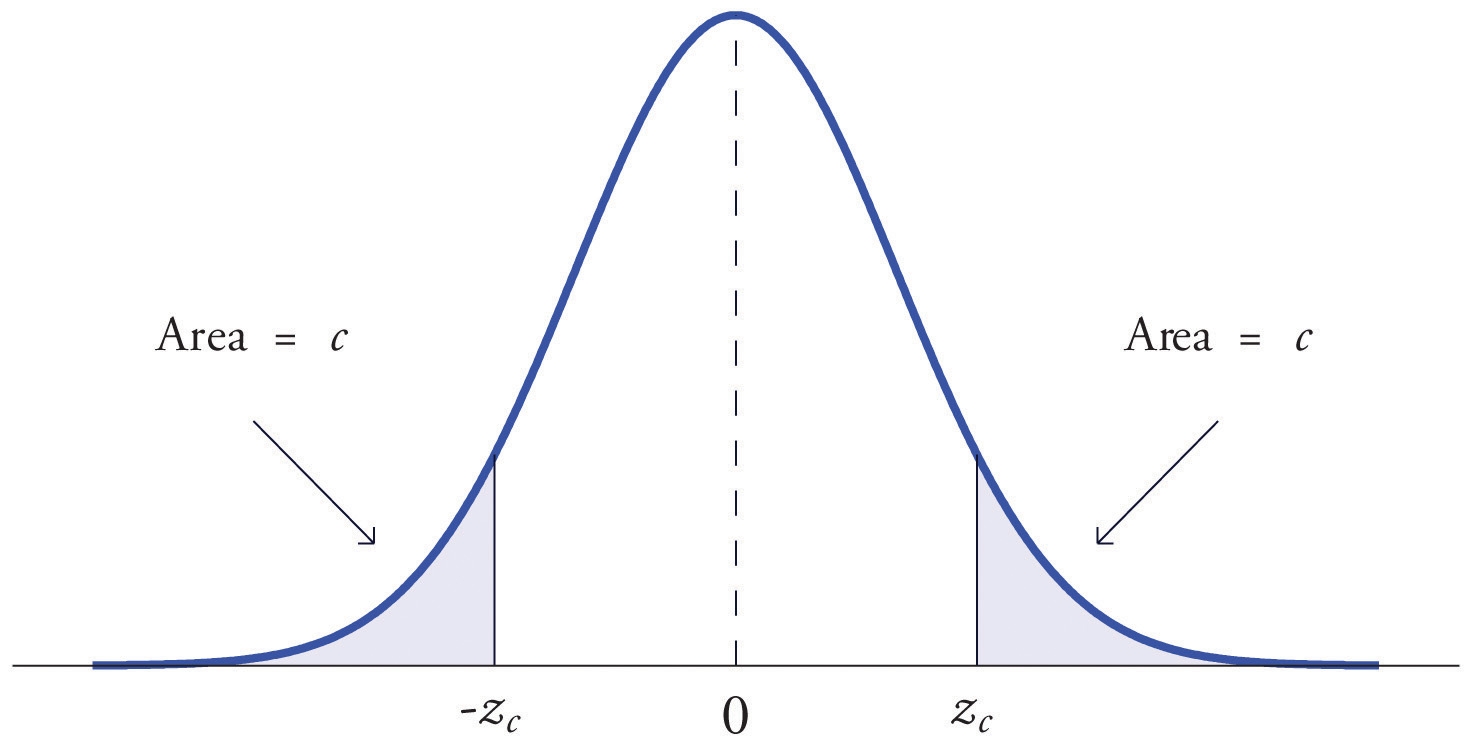5-4. Areas of Tails of Distributions
密度曲线的尾部
The left tail of a density curve of a continuous random variable X cut off by a value of X is the region under the curve that is to the left of , as shown by the shading in Figure "Right and Left Tails of a Distribution" (a). The right tail cut off by is defined similarly, as indicated by the shading in Figure "Right and Left Tails of a Distribution" (b).

1. Tails of the Standard Normal Distribution
At times it is important to be able to solve the kind of problem illustrated by the figure as follows. We have a certain specific area in mind, in this case the area 0.0125 of the shaded region in the figure, and we want to find the value of that produces it. This is exactly the reverse of the kind of problems encountered so far. Instead of knowing a value of and finding a corresponding area, we know the area and want to find In the case at hand, in the terminology of the definition just above, we wish to find the value that cuts off a left tail of area 0.0125 in the standard normal distribution.

EXAMPLE 17. Find the value of as determined by the above figure: the value that cuts off a left tail of area 0.0125 in the standard normal distribution. In symbols, find the number such that
[ Solution ]

EXAMPLE 18. Find the value of as determined by Figure : the value that cuts off a right tail of area 0.0250 in the standard normal distribution. In symbols, find the number such that

[ Solution ]
The value of the standard normal random variable that cuts off a right tail of area c is denoted . By symmetry, value of that cuts off a left tail of area c is See the below "The Numbers ".


EXAMPLE 19. Find and , the values of that cut off right and left tails of area 0.01 in the standard normal distribution.
[ Solution ]


2. Tails of General Normal Distributions
Suppose is a normally distributed random variable with mean and standard deviation . To find the value of that cuts off a left or right tail of area c in the distribution of :
find the value of that cuts off a left or right tail of area c in the standard normal distribution;
is the z-score of ; compute using the destandardization formula
EXAMPLE 20. Find such that , where is a normal random variable with mean and standard deviation .
[ Solution ]


EXAMPLE 21. Find such that , where X is a normal random variable with mean and standard deviation .
[ Solution ]


EXAMPLE 22. Scores on a standardized college entrance examination (CEE) are normally distributed with mean 510 and standard deviation 60. A selective university decides to give serious consideration for admission to applicants whose CEE scores are in the top 5% of all CEE scores. Find the minimum score that meets this criterion for serious consideration for admission.
[ Solution ]


EXAMPLE 23. All boys at a military school must run a fixed course as fast as they can as part of a physical examination. Finishing times are normally distributed with mean 29 minutes and standard deviation 2 minutes. The middle 75% of all finishing times are classified as “average.” Find the range of times that are average finishing times by this definition.
[ Solution ]


3. Using qnorm() and pnormGC in R
~
1) find or
qnorm(p, mean = , sd = )
2) plotting (See 5-3. pnormGC())
pnormGC(p, region= , mean=, sd =, graph = )
EXAMPLE 24.

EXAMPLE 25. Find such that , where is a normal random variable with mean and standard deviation .

密度曲线的尾部 tail of a density curve 一般正态分布 General Normal Distributions
Last updated
Was this helpful?